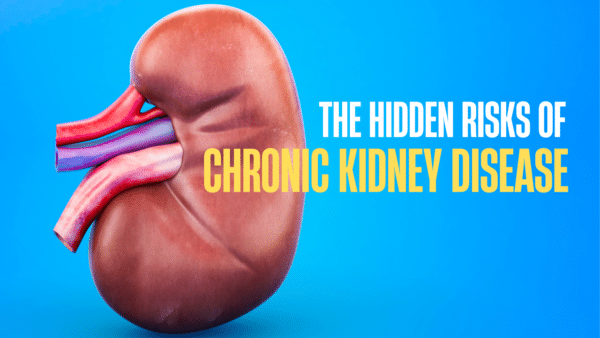Blood tests are like secret agents for our health, giving us a sneak peek into what’s really happening inside our bodies. They’re more than just routine check-ups; think of them as windows into our well-being, uncovering essential insights that might not be visible on the surface. But what kinds of blood tests do people usually look for, and what’s the big deal about them?
Are you intrigued by what these everyday blood tests can tell us and what they involve? Let’s embark on a journey together to uncover the mysteries of these tests and tackle the big question: “Why are these tests so popular? What makes health enthusiasts turn to online blood tests, and why do they keep testing?” The answer is simple – these tests have a unique way of detecting and managing a variety of health issues. Imagine having a superpower that reveals your body’s hidden secrets, empowering you to act swiftly and stay proactive in your health journey. Diving into the world of blood tests reveals their critical role in keeping us one step ahead in our health management.
Blood tests are an essential tool in discovering important health-related information, which can assist people and their healthcare professionals in making informed decisions about their health. Whether it’s keeping tabs on our overall health, identifying potential problems early, or managing chronic conditions, the importance of these tests cannot be overstated.
In this guide, we’ll discover why regular blood tests are vital for maintaining peak health and catching any issues before they escalate. Understanding the most commonly requested health tests can empower us to take control of our health journey. Together, we can work towards catching and addressing any concerns early, preventing bigger challenges down the road. It’s all about prevention, early detection, and swift action to keep any health concerns in check.
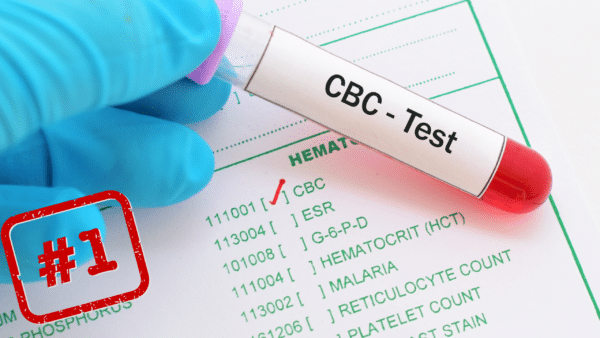
Complete Blood Count (CBC)
The Complete Blood Count (CBC) is like your health’s first line of defense, offering a detailed look into your blood to see how things are going beneath the surface. It’s a key player in checking out your overall health and spotting a variety of conditions, from anemia to infections and beyond. Your doctor might have even asked you to order the CBC.
Here’s What a CBC Dives Into:
- Red Blood Cells (RBCs): These are the delivery trucks of your body, responsible for transporting oxygen everywhere you need it. By checking out your RBCs (how many there are, their size, and shape), doctors can catch issues like anemia or conditions that cause too many RBCs.
- White Blood Cells (WBCs): Think of these as your body’s security team, always on the lookout for invaders like infections. By examining the different types of WBCs, doctors can detect infections, inflammation, or even signs of leukemia.
- Platelets: These are the body’s band-aids, helping your blood clot properly. An off number or size of platelets can signal bleeding disorders or bone marrow problems.
- Hemoglobin: This protein is what makes your red blood cells red, carrying oxygen throughout your body. Its levels can give clues about conditions like anemia.
- Hematocrit: This tells us what percentage of your blood is made up of red blood cells, helping to diagnose conditions like anemia or dehydration.
Why Is the CBC So Important?
- It’s a frontline tool for catching anemia by looking at red blood cells and hemoglobin levels.
- High white blood cell counts can be a red flag for infections or inflammation.
- Platelet counts give insights into potential clotting issues or excessive bleeding, hinting at underlying disorders.
How Often Should You Get Tested?
The right frequency for a CBC test can vary from person to person, depending on your health history, current conditions, and specific symptoms. Usually, it’s part of your routine health check-up. If you’re dealing with health conditions or treatments affecting your blood cells, you might need to check in more often. The best bet is to chat with your healthcare provider to figure out a testing schedule that fits your unique health picture.
Understanding your CBC results can lead to early detection and management of potential health issues, making sure you get the right treatment exactly when you need it.
You can find out more about the CBC test here.
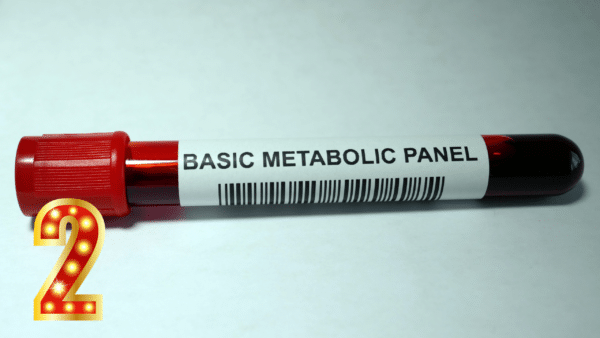
Comprehensive Metabolic Panel (CMP)
Diving into the world of health checks, the Comprehensive Metabolic Panel (CMP) is like the ultimate health dashboard for your body. It’s a thorough check-up that measures a bunch of different substances in your blood to give you and your doctor a snapshot of how your body’s major systems are doing.
So, What’s the CMP All About?
- Liver and Kidney Health: These two organ systems are like the body’s filtration system and chemical processing plant. The CMP checks how well they’re doing their jobs, which is crucial for keeping everything running smoothly.
- Blood Sugar Levels: Monitoring blood sugar levels is crucial for detecting and managing diabetes. The CMP lets you know if your blood sugar is in the sweet spot or if adjustments are needed.
- Protein Levels: Proteins are the body’s building blocks, so checking these levels can tell a lot about your nutritional status and overall health.
- Electrolyte Balance: Electrolytes are minerals found in your blood that help maintain the balance of water in your body and regulate its pH levels. Think of them as the body’s electricians, making sure the power flows where it should.
Why Should You Care About Your CMP Results?
Your CMP results are like a health report card, showing how well your body’s internal processes are functioning. They’re a crucial part of understanding your overall health and can pinpoint issues that might need closer attention.
Decoding CMP Results: What Do They Mean for You?
Understanding the CMP results can feel like cracking a code, but here’s the gist: abnormal values might signal various conditions. For example:
- Liver or Kidney Issues: Abnormal results could indicate problems with these organs, like liver disease or kidney dysfunction.
- Blood Sugar Concerns: High glucose levels might suggest diabetes or pre-diabetes, while low levels could point to insulin overproduction or excessive insulin use.
- Protein and Electrolyte Imbalances: These could hint at nutritional deficiencies, dehydration, or issues with acid/base balance.
The CMP results, especially if they veer off the normal range, can lead to early intervention and management of potential health concerns. It’s all about keeping you informed and in control of your health journey.
Remember, while the CMP offers a wealth of information, it’s just one piece of the health puzzle. Always discuss your results and any concerns with your healthcare provider to get the full picture and the best advice tailored to your unique health situation.
You can find out more about the CMP test here.
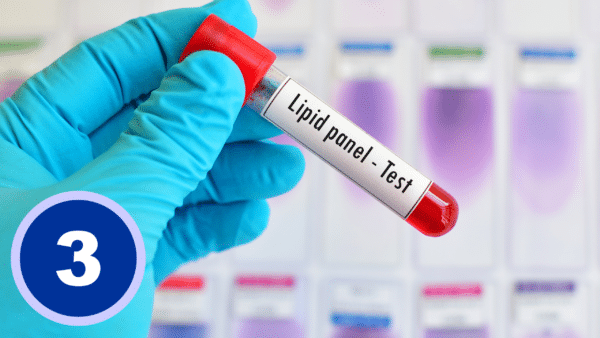
Lipid Panel (Cholesterol and Triglycerides)
Welcome to the world of the Lipid Panel, your go-to test for keeping tabs on heart health through checking your cholesterol and triglyceride levels. It’s like having a heart health detective right at your fingertips, giving you the lowdown on what’s happening with the fats in your blood.
Why Keep an Eye on Cholesterol and Triglycerides?
Cholesterol and triglycerides play huge roles in your overall heart health. Understanding and managing their levels can be your secret weapon in preventing heart disease and keeping your heart happy and healthy for years to come.
Meet the Players: LDL, HDL, and Triglycerides
- LDL (Low-Density Lipoprotein): Often dubbed “bad” cholesterol, LDL is the type that can build up in your arteries, making them hard and narrow, which is not what you want. Lowering LDL is key to keeping your arteries clear and your heart pumping strong.
- HDL (High-Density Lipoprotein): This is your “good” cholesterol, the heart’s superhero, helping to sweep away LDL cholesterol from your arteries and send it packing to your liver to be processed out of your body. High HDL levels are a plus for your heart health.
- Triglycerides: Triglycerides are a category of fats present in your bloodstream. After eating, the body converts any leftover calories into triglycerides, that are then stored in fat cells. High levels can be a sign of too much fat in your diet and a risk factor for heart disease.
What Do Your Lipid Panel Results Mean for Your Heart?
Your lipid panel results offer a glimpse into your risk for heart disease. High LDL and triglycerides combined with low HDL can raise a red flag for your heart health, signaling it’s time to take action.
Making Positive Changes
The great news is there are plenty of lifestyle tweaks that can help improve your lipid panel results:
- Eat Heart-Smart: Focus on a diet rich in fruits, veggies, whole grains, and lean proteins. Cutting back on weating saturated fats, trans fats, and sugars can do wonders for your cholesterol levels.
- Get Moving: Regular exercise helps boost your HDL levels and lower LDL and triglycerides. Aim for at least 30 minutes of moderate exercise most days of the week.
- Quit Smoking and Limit Alcohol: Both of these can negatively impact your heart health and lipid levels. Kicking the habit and moderating alcohol intake can lead to significant improvements.
- Weight Management: If you’re carrying extra weight, shedding some pounds can improve your cholesterol levels and lower your risk of heart disease.
By keeping an eye on your lipid panel and making heart-healthy choices, you’re taking powerful steps toward a healthier heart. Remember, you’re in the driver’s seat when it comes to your health, and small changes can make a big difference. Always consult with your healthcare provider to understand your results and get personalized advice on managing your heart health.
The Lipid Panel Blood Test is easy to order, and you can find out more about the test here.
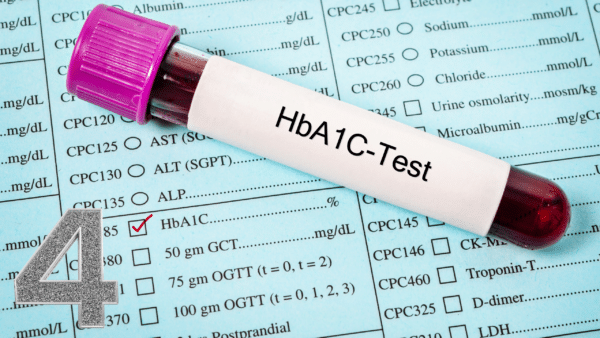
Hemoglobin A1c Test
Stepping into the spotlight now is the Hemoglobin A1c Test, a superstar in the world of diabetes care. This test is like a time machine, giving you a peek into your blood sugar levels over the past three months. It’s crucial for anyone navigating diabetes, whether you’re just starting to suspect you might have it or you’ve been managing it for years.
Why the A1c Test Rocks for Diabetes Management
The Hemoglobin A1c test measures what percentage of your hemoglobin — a protein in red blood cells that carries oxygen — is coated with sugar (glycated). This gives you and your healthcare team a good idea of how well your blood sugar levels have been controlled over time, which is essential for both diagnosing diabetes and managing it.
How Does the A1c Test Work Its Magic?
Think of your red blood cells as little sugar magnets. Over their lifespan, they pick up sugar from your blood. The A1c test measures how sugary your red blood cells have gotten, offering a glimpse into your average blood sugar levels. Since these cells live for about three months, the A1c test shows how your blood sugar has been trending over that period.
Decoding Your A1c Results
Your A1c result will come as a percentage. Here’s a quick guide:
| A1c Level | What It Means |
| Below 5.7% | Considered normal. You’re doing great! |
| 5.7% to 6.4% | Suggests prediabetes. It’s a heads-up that you’re at risk for developing diabetes, but you’re not there yet. Time to take some proactive steps! |
| 6.5% or higher on two separate tests | Means diabetes. It indicates that it’s time to focus on management and treatment strategies with your healthcare team. |
For those managing diabetes, lowering your A1c to below 7% typically reduces the risk of diabetes complications, though the ideal target can vary based on your personal health.
Lifestyle Tweaks to Manage Your A1c
Improving your A1c and keeping your diabetes in check is definitely possible with some smart lifestyle changes:
- Eat Wisely: Choose a balanced diet rich in fruits, vegetables, whole grains, and lean proteins. It’s important to keep in mind the serving sizes and try to consume carbs in equal amounts throughout the day.
- Get Active: Regular physical activity even things like walking can help lower your blood sugar levels and boost your body’s sensitivity to insulin. Find activities you enjoy and aim for at least 150 minutes of moderate aerobic exercise per week.
- Monitor Your Blood Sugar: Keeping tabs on your blood sugar levels can help you see how different foods and activities affect you and allow you to make adjustments in real-time.
- Manage Stress: Stress can affect your blood sugar levels, so finding ways to relax and de-stress is important for managing diabetes.
- Stay on Top of Your Health: Regular check-ups with your healthcare provider, staying up to date with vaccinations, and monitoring other health metrics can all contribute to better diabetes management.
Understanding and managing your Hemoglobin A1c levels can be a game-changer in living a healthier life with diabetes. With the right strategies and support, you can take control of your diabetes and lead a full, active life. Always work closely with your healthcare team to find the best approach for you.
Find out more about the A1C test here.
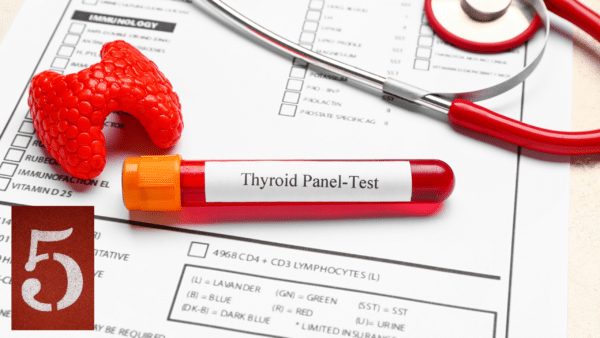
Thyroid Function Tests
Welcome to the fascinating world of Thyroid Function Tests, where we get to know one of the body’s true unsung heroes: the thyroid gland. This little butterfly-shaped gland in your neck is basically the maestro of your metabolism, orchestrating how your body uses energy. It affects almost every organ in your body, influencing your metabolism, energy levels, and even your mood!
Why is Thyroid Health So Important?
Think of your thyroid as the thermostat of your body. When it’s working just right, everything runs smoothly. But if it’s off, things can start to go haywire. Your thyroid produces hormones that regulate tons of vital body functions. So, keeping it in check is crucial for feeling your best.
The Spotlight on TSH Test
Enter the TSH (Thyroid stimulating hormone) test, the go-to method for checking your thyroid health. The pituitary gland produces TSH and tells your thyroid to get busy making thyroid hormones. If your TSH levels are off, it could mean your thyroid isn’t working as it should. This test is like the first clue in solving the mystery of how your thyroid is performing.
Thyroid Function: A Key Player in Your Well-being
Your thyroid has a big job, influencing:
- Metabolism is how your body converts food into energy. A wonky thyroid can either slow your metabolism (making you feel tired and chilly) or rev it up (leading to weight loss and heat intolerance).
- Energy Levels: If you have too little thyroid hormone, you might feel like you’re always running on empty. Too much, and you’ll be wired.
- Mood: Thyroid imbalances can lead to mood swings, anxiety, or even depression.
Decoding Thyroid Test Results
Understanding your thyroid test results is key to managing your health:
- Normal TSH levels typically suggest your thyroid is doing its job right.
- High TSH levels might indicate hypothyroidism, where your thyroid isn’t producing enough hormones, slowing everything down.
- Low TSH levels could point to hyperthyroidism, where your thyroid is in overdrive.
Remember, thyroid tests are like pieces of a puzzle. Your doctor might order additional tests, like T4 or T3, to get the full picture of your thyroid health.
What’s Next?
If your tests show that your thyroid could use a little help, don’t worry! There are many ways to manage thyroid issues, from medication to lifestyle changes. Working closely with your healthcare provider, you can find the right balance and get back to feeling like yourself.
Caring for your thyroid is a key part of your overall well-being. By staying informed and proactive, you’re on the path to optimal health. So here’s to your thyroid, the unsung hero of your body’s daily symphony!
Product to link to Thyroid-stimulating hormone (TSH) blood test and another thyroid test that would make sense to link to from this blog post.
Find out more about the Thyroid test here.
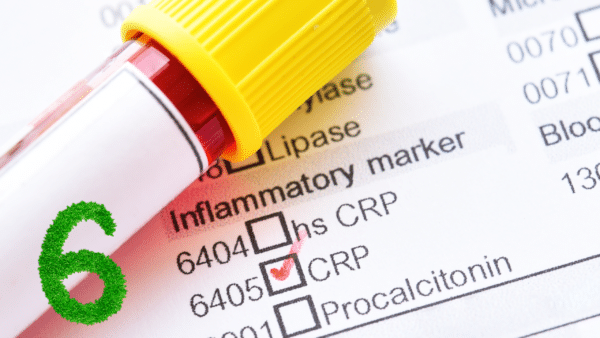
hs-CRP (High Sensitivity C-Reactive Protein)
The hs-CRP (high-sensitivity C-reactive protein) test is a game-changer in understanding inflammation and its impact on health, especially on the heart.
Why Inflammation Matters
Imagine your body’s immune system is like a home security system. Inflammation is how your body signals that there’s an intruder, like an infection or injury. While it’s crucial for healing, when inflammation sticks around longer than needed (we’re talking chronic inflammation here), it can start causing problems, contributing to diseases, including heart disease.
Spotlight on hs-CRP Test
The hs-CRP test steps in as a super-sensitive detective to spot even low levels of inflammation in the body. Why focus on the heart, you ask? Well, research has linked higher hs-CRP levels with a higher risk of heart attacks. This test helps doctors figure out your heart disease risk level, adding another piece to the puzzle alongside cholesterol levels and blood pressure.
What Can You Do About High hs-CRP Levels?
Finding out you have high hs-CRP levels might feel a bit concerning, but there’s plenty you can do to lower them and reduce your heart disease risk:
- Eat a Heart-Healthy Diet: Foods rich in omega-3 fatty acids, like salmon and flaxseeds, and plenty of fruits, vegetables, and whole grains can help cool down inflammation.
- Get Moving: Regular physical activity is not only great for your overall health but can also lower inflammation. Whether it’s walking, swimming, or yoga, find something you enjoy and stick with it.
- Quit Smoking: If you smoke, here’s yet another reason to quit. Smoking is a major inflammation booster, not to mention its other risks to your heart and health.
- Watch Your Weight: Carrying extra weight, especially around your midsection, can increase inflammation. Shedding those pounds can lead to lower hs-CRP levels and improve your heart health.
- Manage Stress: Chronic stress can fan the flames of inflammation. Finding ways to relax and de-stress, like meditation, reading, or spending time in nature, can help keep your inflammation in check.
Understanding and managing your hs-CRP levels is a powerful step toward keeping your heart healthy and reducing your risk of heart disease. It’s all about taking proactive steps towards a healthier lifestyle. Remember, your healthcare provider is your partner in this journey, so keep them in the loop and work together to keep your heart ticking happily for years to come.
Find out more about the hs-CRP Test here.
here.
Product to link to: LETSGETCHECKED – HIGH-SENSITIVITY CRP BLOOD SPOT TEST KIT
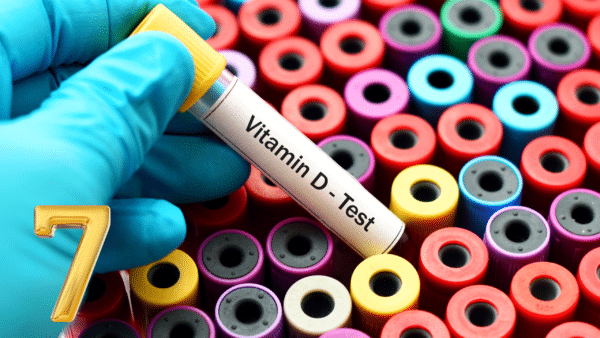
Vitamin D Test
Let’s shine some light on the Vitamin D Test, a key player in monitoring your “sunshine vitamin” levels. Vitamin D isn’t just a vitamin; it’s a superhero for your bones, your mood, and even your immune system. But despite its importance, vitamin D deficiency is surprisingly common. So, how do we make sure we’re getting enough?
Why Vitamin D Deserves a Standing Ovation
Vitamin D is crucial for absorbing calcium, making it a cornerstone for strong, healthy bones. But its talents don’t stop there; it’s also involved in muscle function, brain health, and keeping your immune system in fighting shape. Plus, it plays a role in mood regulation. Basically, vitamin D is doing a lot behind the scenes to keep you feeling your best.
What Leads to Vitamin D Deficiency?
Several factors can put you at risk for low vitamin D levels:
- Limited Sunlight Exposure: Sunscreen, long indoor hours, and winter seasons can reduce your body’s ability to produce vitamin D from sunlight.
- Diet: If your diet lacks vitamin D-rich foods (like fatty fish, fortified foods, and egg yolks), you might not get enough.
- Skin Color: Darker skin has more melanin, which reduces the skin’s ability to make vitamin D from sunlight.
- Age and Health Conditions: Our skin’s ability to produce vitamin D decreases as we age. Certain conditions can also affect vitamin D absorption.
Deciphering Your Vitamin D Test Results
Your vitamin D test results tell you how much of this vitamin is cruising around in your blood, giving you insights into your bone health and overall well-being. Here’s a quick guide:
| Vitamin D Level (ng/ml) | What It Means for You |
| Below 20 | Considered deficient, which means it’s time to boost your Vitamin D intake. Let’s get those levels up for your health’s sake! |
| 20 to 50 | Just right! This range shows you have enough Vitamin D to keep your bones strong and your overall health in check. You’re doing great! |
| Above 50 | Heading into the too-much-of-a-good-thing territory, indicating your Vitamin D levels might be a bit too high. Let’s balance things out for optimal health. |
Boosting Your Vitamin D Levels: Let the Sunshine In (Safely)
If your vitamin D levels need a boost, here are some sunny tips:
- Soak Up Some Sun: Safe sun exposure can help your skin make vitamin D. Aim for about 10-30 minutes a few times a week, depending on your skin’s sensitivity and your location.
- Eat Vitamin D-Rich Foods: Incorporate foods like fatty fish (salmon, mackerel), fortified foods (milk, cereal), and egg yolks into your diet.
- Consider Supplements: If you’re not getting enough vitamin D from sunlight and food, supplements can be a great way to fill the gap. Chat with your healthcare provider to find the right dose for you.
Checking in on your vitamin D levels with a test is a smart move for your bones, your mood, and your immune system. By understanding your levels and how to optimize them, you’re taking a big step toward maintaining your overall health and vitality. Here’s to bringing more sunshine into your life, both literally and figuratively!
Learn more about the Vitamin D 25 Hyroxy Blood Test here.
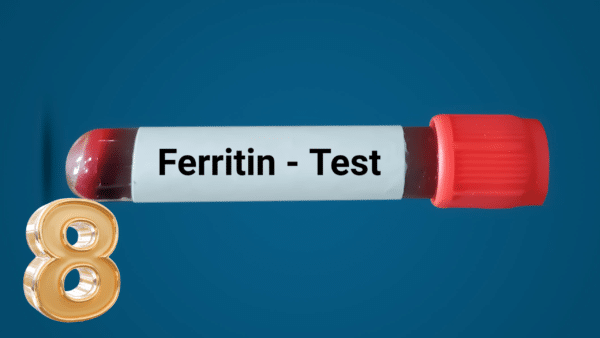
Iron/Ferritin Test
Embarking on a journey through the Iron/Ferritin Test, we’re not talking about lifting weights or architectural feats—this adventure is all about that essential mineral coursing through your veins. Iron’s claim to fame lies in its role within hemoglobin, the key player in your red blood cells responsible for oxygen transport. Ensuring your iron levels are just right is akin to finding the perfect balance in a delicate dance; too much or too little can lead to a range of health challenges. So, let’s fine-tune our approach and ensure your body’s iron rhythm keeps you moving smoothly on your path to wellness.
Why Iron Levels Are a Big Deal
Iron is like the fuel for your body’s energy engine. It helps make sure every cell gets the oxygen it needs to function. Without enough iron, your body can’t produce enough healthy oxygen-carrying red blood cells, leading to fatigue and weakness. On the flip side, too much iron can cause its own set of problems, like liver damage and other conditions.
Signs You Might Be Running Low (or Overfull) on Iron
If your iron tank is running low, you might notice:
- Fatigue and lack of energy
- Weakness
- Pale skin
- Shortness of breath
Too much iron can manifest as:
- Joint pain
- Abdominal pain
- Fatigue, oddly enough
- Skin with a bronze or gray hue
Decoding Iron/Ferritin Test Results
Your iron/ferritin test results give you a snapshot of how much iron is stored and circulating in your body. Here’s a quick guide to what the numbers can mean:
- Low Iron/Ferritin Levels: This could point to iron deficiency anemia, suggesting your stores are running low and your body’s craving more iron.
- High Iron/Ferritin Levels: This might indicate conditions like hemochromatosis, where your body hoards too much iron, leading to potential organ damage.
Navigating Through Iron-Related Disorders
If your test reveals you’re not quite hitting the iron sweet spot, don’t worry; there are several ways to get back on track:
- For Iron Deficiency: Iron supplements and iron-rich foods (think spinach, red meat, lentils) can help refill your iron reserves. Vitamin C can also give iron absorption a boost, so pairing an orange with your iron-fortified cereal is a smart move.
- For Iron Overload: Treatment might include phlebotomy (regularly removing blood to reduce iron levels) or chelation therapy (medication that binds to and helps remove excess iron from the body).
Whether you’re dealing with too little or too much iron, the key is catching it early and adjusting course with the help of your healthcare team. Staying informed and proactive about your iron levels can make a huge difference in your energy levels and overall health. So here’s to balancing your iron and powering your body’s every move!
You can get a Ferritin Blood Test, and Iron Serum Test at Walk-In Lab.

GGT (Gamma Glutamyl Transferase)
Turning our attention to liver health, let’s explore GGT (Gamma Glutamyl Transferase)—a crucial enzyme that may not be widely known but is incredibly important for maintaining a healthy liver. GGT plays a pivotal role in transporting amino acids and peptides in the body and is involved in metabolizing glutathione, a major antioxidant. Think of GGT as the liver’s traffic director, ensuring that biochemical processes run smoothly and efficiently.
Why GGT Levels Matter
Abnormal GGT levels can be the liver’s way of sending out an SOS signal. Elevated GGT levels might suggest liver inflammation, bile duct issues, or even more serious conditions like liver disease, pancreatitis, or alcohol dependence. On the flip side, though less common, low GGT levels could also signal health concerns that merit a closer look.
Conditions Linked to Wonky GGT Levels
Several liver-related conditions can cause your GGT levels to swing from their happy place:
- Liver Disease: From fatty liver disease to more severe forms like cirrhosis, GGT levels often rise when the liver is under stress.
- Alcohol Abuse: Regular heavy drinking can inflame the liver, reflected in elevated GGT levels.
- Bile Duct Obstruction: GGT can increase if something’s blocking the bile ducts, preventing bile from doing its job.
Embracing a Liver-Loving Lifestyle
If your GGT levels are telling you it’s time to give your liver some TLC, here are some positive changes that can make a big difference:
- Moderate Alcohol Intake: Giving your liver a break from processing alcohol can significantly reduce inflammation.
- Eat a Balanced Diet: Foods rich in antioxidants, fibers, and healthy fats support liver health. Think leafy greens, fruits, nuts, and fish.
- Stay Active: Regular physical activity helps maintain a healthy weight, reducing the risk of fatty liver disease.
- Hydrate: Drinking plenty of water supports the liver by helping to flush out toxins.
You can find out more about the Gamma-Glutamyl Tranferase Blood test here.

Uric Acid Test
Wrapping up our journey through the top blood tests, we turn our attention to uric acid—a key player produced when your body breaks down purines from your diet. Though uric acid is an essential part of your bodily functions, maintaining the right balance is crucial. Levels that soar too high or dip too low can lead to trouble. Let’s delve into the significance of uric acid and how it affects your health, highlighting its connection to conditions such as gout, kidney stones, heart disease, and diabetes.
The Uric Acid Balancing Act
Uric acid is a substance that dissolves in the bloodstream and is eliminated through urine by the kidneys. However, when the body produces an excess amount of uric acid or fails to get rid of it adequately, it may accumulate in the joints or nearby tissues, causing the formation of needle-shaped crystals that result in inflammation and pain.
Health Plot Twists Linked to Uric Acid Levels
- Gout: This form of arthritis is perhaps the most famous tale of excess uric acid. Those sharp crystals we talked about? They like to take up residence in your joints, especially the big toe, leading to intense pain.
- Kidney Stones: Uric acid can also crystallize in your kidneys, creating kidney stones that can be quite painful to pass.
- Heart Disease: High levels of uric acid are linked to an increased risk of heart disease, as they may contribute to higher blood pressure and cardiovascular issues.
- Diabetes: Some studies suggest that elevated uric acid levels might be involved in the development of type 2 diabetes by impairing insulin regulation.
Directing Your Uric Acid Levels Towards a Happy Ending
Managing uric acid levels doesn’t require magic—just some lifestyle tweaks that can make a big difference:
- Hydrate, Hydrate, and then Hydrate: Drinking plenty of water helps your kidneys flush out uric acid more efficiently.
- It’s important to limit foods that are high in purines, such as red meat and seafood, as they can increase uric acid levels. It’s wise to consume them in moderation.
- Embrace Low-Fat Dairy: Studies have shown that low-fat dairy products can lower uric acid levels, making them a good choice.
- Watch Your Fructose Intake: Fructose can raise uric acid, so be mindful of sugary drinks and snacks.
- Stay Active: Regular exercise can help individuals maintain a healthy weight, which in turn will help control your uric acid levels.
Understanding and managing your uric acid levels is a crucial step in protecting your joints, kidneys, heart, and overall health. By keeping these levels balanced through simple lifestyle changes, you’re not just avoiding health issues—you’re setting the stage for a healthier, happier you. Here’s to making uric acid management a key part of your health repertoire!
You can find out more about the Uric Acid Blood Test here.
Conclusion
As we wrap up our exploration of common blood tests, it’s clear these tests are invaluable tools in our health maintenance toolkit. They’re not just routine checks; they’re insightful windows into our body’s inner workings, revealing essential information that can guide us towards optimal health and early disease detection.
This guide serves as an encouragement to make regular blood testing a part of your healthcare routine. Engaging in discussions with your healthcare provider about your test results can illuminate the path to maintaining or improving your health status. Remember, understanding your body’s signals through these tests empowers you to take proactive steps towards disease prevention and health optimization.
Let’s not underestimate the power of proactive health measures. Alongside regular testing, adopting lifestyle changes that support your body’s needs can profoundly impact your well-being. Whether it’s tweaking your diet, incorporating more physical activity, or managing stress, small changes can lead to significant health benefits.
So, here’s to taking charge of our health through regular blood tests and informed conversations with our healthcare providers. By staying informed and proactive, we can navigate the journey to optimal health with confidence and clarity. Here’s to a healthier, happier you!

